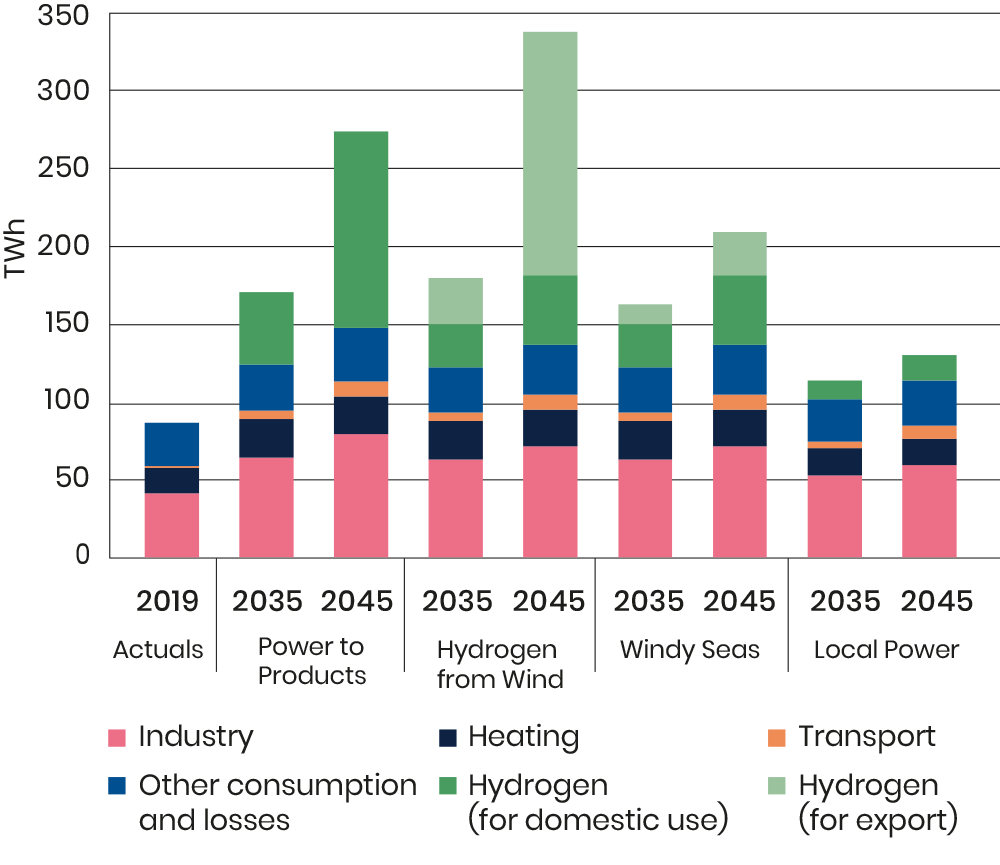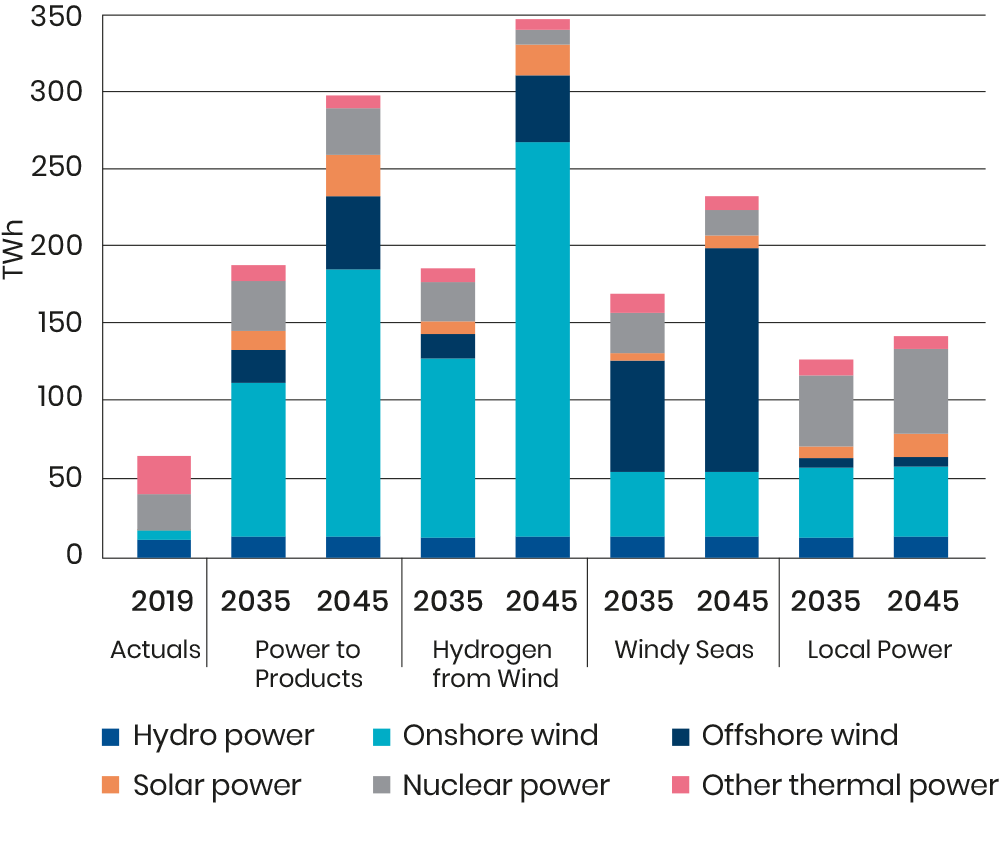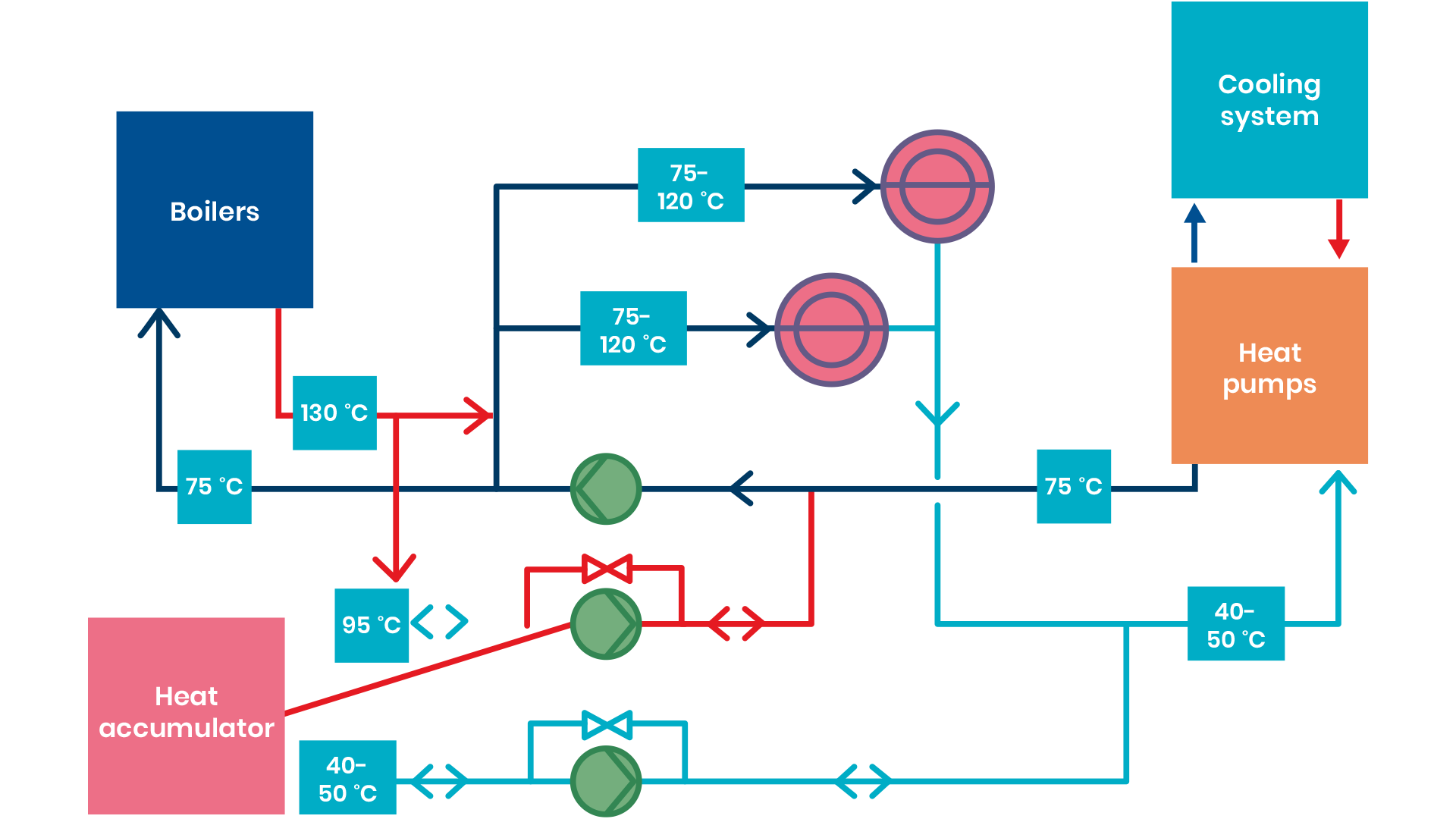03/08/2023
Electrification of industry is necessary for reducing carbon dioxide emissions
The electrification of industry will play a key role in the pursuit of carbon neutrality at the EU level and soon also globally. Electrification provides opportunities for industrial operators at many levels. In order to realize their full potential, a strategy and roadmap to promote electrification need to be established.
The increased price of natural gas as a result of the Russian war of aggression against Ukraine has prompted many operators to consider abandoning natural gas, and one potential option is to replace it with electrical solutions. In general terms, electrification refers to increasing the use of electricity and electric applications in different areas. In the longer term, electrification is one of the key elements of the green transition.
From the consumer´s point of view, the development of electrification can be best seen in how cars are powered. In 2021, of the nearly 100,000 first-time registered passenger cars, 10% were electric cars and 20% were plug-in hybrid cars. Some of the passenger cars recorded as petrol- and diesel-powered cars were light hybrids and non-rechargeable hybrid passenger cars.1
Electrification can also be seen in industry
The electrification of industry can be divided into three trends2:
- direct electrification,
- electrification solutions that involve heat pumps, and
- indirect electrification involving the production of electricity such as hydrogen and synthetic fuels.
In industrial environments, direct electrification refers to converting an activity that currently uses fossil fuels into an electric-powered activity. Practical examples include the replacement of gas trucks with electric forklifts, using electric furnaces instead of natural gas-powered furnaces and favoring electric boilers over oil boilers in district heating. Potential applications can be found in a wide range of industrial sectors.
Heat pumps provide the best energy savings
Electrification solutions that involve heat pumps differ from direct electrification in terms of efficiency. Heat pumps can replace fossil energy sources in the same way as in direct electrification while creating energy savings.
Direct electrification also provides the potential to save energy by eliminating the proportion of flue gas loss, but in general, more significant energy and cost savings can be achieved with the help of heat pumps. However, heat pumps have their own technical limitations, and are not suitable for all applications. For example, sometimes the process requires a temperature that is too high for heat pumps.
Modern heat pumps can already profitably produce temperatures over 100 °C. Technically, the potential is currently around 150 °C. Heat pumps typically require buffer capacity to provide stability, good control as well as backup energy systems to ensure the continuity of activities in all conditions.
Electrical energy is also used to convert water into hydrogen
The basic principle of indirect electrification is that electrical energy is used to decompose water into hydrogen and oxygen through electrolysis. Hydrogen can be used either directly as a source of energy, for example in ship engines, or as an energy carrier, in which case the bound energy is converted back into electricity with fuel cells.
Hydrogen can also serve as a raw material for synthetic production processes, for example, when producing methanol or green ammonia as a replacement for fossil fuel. Today, ammonia is mainly produced from natural gas by means of steam reforming.
The use of electricity and how it is timed will be key elements in all hydrogen economy solutions. However, it is good to remember that one of the most important short-term development areas of the hydrogen economy is the efficiency of the production chain.
At worst, the efficiency may be as low as 25–50%, which is why direct electrification can be the most cost-effective way to promote low-carbon energy in certain settings. Likewise, in the long term, hydrogen economy solutions will play a key role in our energy system.

Electricity consumption in the different scenarios

Electricity production in the different scenarios
EU emission targets guide electrification
According to the EU’s emission targets, 55% emission reductions will be achieved by 2030 and carbon neutrality will be a reality by 2050. The EU also considers the promotion of sector coupling, in which electrification plays a key role, as one of the concrete actions.3
Previous targets were set at the national level with some variation. Finland’s goal is to increase wind power capacity, which opens up more opportunities for market-based industrial electrification solutions. However, it is important to ensure, for example, the effective authorization of projects at the national level.
Industrial projects will also be supported with the electrification subsidy for energy-intensive industries, which was introduced in 2022. The aim of the subsidy system, which is in place for a limited time, is to prevent the risk of carbon leakage, safeguard the cost competitiveness of industry and guide operators to develop more carbon-neutral industrial production methods. Operators must use at least 50% of the subsidy in development efforts to reduce emissions, improve energy efficiency or increase the share of renewable energy in energy consumption.4
What are the forecasts for Finnish industry?
Several scenarios for the development of electrification have been prepared, for example, by the Finnish Climate Change Panel, the Finnish Energy, Sitra and Fingrid. Most recently, Fingrid prepared four different scenarios for the future of electricity consumption and production5.
All Fingrid’s scenarios highlight the growth of electricity consumption and production by 2035 and 2045. It should also be noted that in all scenarios, Finland produces more electricity than it uses, i.e. on an annual basis, self-sufficiency of electricity is exceeded. The main differences between the scenarios can be seen in production in wind power growth scenarios and in usage in hydrogen economy solutions.
It is important to understand that electrification takes place at several levels, using both direct and indirect electrification as well as hydrogen economy solutions. We need all of them, along with an understanding of which solutions are best suited for each application. In order to promote the hydrogen economy, every effort must be made to promote wind energy projects, and projects related to the production and use of hydrogen must be started as soon as possible.
Risks and opportunities abound
The electrification of industry involves both challenges and opportunities, which significantly affect the magnitude and speed of change. Energy is, and always will be, a strongly political issue. This creates risks, especially for a small country that does not have significant geopolitical influence. That is why unity within the EU in energy matters is important for Finland. On the other hand, appropriate political decisions allow us to support companies in implementing climate projects to an increasing extent.
The development of electricity prices has a significant impact on the electrification of industry, both in terms of the average price level and price volatility. Profits from high electricity prices should therefore be invested in increasing clean energy production and promoting the green transition. Fluctuating electricity prices may make it more difficult for electricity companies to manage their cash flow and, on the other hand, create more financial risks.
Energy users may benefit from fluctuating electricity prices if it is possible to save on consumption volumes or to reschedule periods of high electricity consumption. Therefore, more alternative forms of energy production may be available for production facilities in the future, and in addition, reserve capacities will increase.
Room for improvement in technology
Technologically, we already have a working technology, but its efficiency still needs to be improved, which in turn will have a direct impact on the profitability of projects. It is also important to start green hydrogen projects as the proliferation of these projects will certainly also open up new financial channels.
In particular, the new connection possibilities of heat pump technology and the higher temperatures produced will create new potential applications. Heat pump applications as part of district heating is a strong, growing trend6. Hydrogen economy projects have also been announced to an increasing extent and suitable application concepts are being explored extensively. In addition, the development and application of digital solutions open up new opportunities for electrification7.
However, as indicated above in the Fingrid scenarios, electricity networks and transmission links need to be developed in order to transmit the increasing generation of electricity to operating sites. This will also require the development of regional electricity networks and networks within industrial areas, which will require significant investments. Improved networks will also allow us to make even more efficient use of electricity while improving security of use and supply.
There is also another missing piece: the storage of electricity. There is no efficient and profitable solution for long-term storage of electricity in addition to hydropower, the capacity of which is nearly impossible to be increased in Finland. Hydrogen is a potential solution, but the current challenge is the profitability and financing of projects.
Electrification of Finnish industry is in its early days
Electrification is not always technically or economically feasible, especially when it comes to processes already in place. But when completely new processes are planned, electronic processes and solutions offer a very high potential.
The electrification of Finnish industry can be summarized as follows:
- Electrification will be one of the tools for achieving the carbon neutrality targets of Finnish industry. We also need many other technologies and solutions, but electrification has a very important role to play.
- Electrification partially enables the utilization of waste heat, for example with heat pumps, but on the other hand, we are facing a shift towards forms of energy production that do not involve combustion. Efforts should be made to examine the attainable benefits as comprehensively as possible.
- In the long term, electrification is related to the hydrogen economy. It is good to outline a roadmap for the 2030s, when solutions will start to play an important role.
- The extent and timing of electrification will be significantly influenced by future political decisions, the level of technology and the development of electricity prices.
In order to promote electrification, a strategy and a roadmap should be established to fully utilize its potential and minimize the risks involved.
Special characteristics of industrial electrification projects
When considering electrification solutions for industry, the baseline is that effective production is always a priority. If electronic solutions have a negative impact on production, for example in terms of production volumes, quality or availability, electrification is very difficult to justify. It is therefore important to clarify the possible constraints comprehensively so that decisions are not based on individual opinions.
- Reliability plays an important role in industrial environments. For example, a heat pump solution that uses waste heat always needs a back-up form of production. The resilience of the systems will play an increasingly important role in the planning of future energy systems.
- One factor to consider in an industrial environment is the large scale of solutions. In practice this causes, for example, a need for space and significant investments. It is therefore important that sufficient investments are made in the planning phase to ensure, for example, that the cost estimate is sufficiently exhaustive and that there are no unwanted surprises during the actual project.
- Projects typically require comprehensive competence. Industrial projects can roughly be divided into two categories: replicable solutions (e.g. container solutions) and unique process-specific solutions. Replicable solutions are particularly suited for SMEs, while heavy and energy-intensive industries often involve highly customized concepts.
In custom projects, holistic competence is important as investments are often made in the middle of existing industrial processes or as part of one. In the case of replicable solutions, it is important to ensure the ease of use and cost-effectiveness of the project to achieve wide-ranging effectiveness.
In an industrial environment, the operation of processes and production equipment is a routine, which can contribute to the introduction of complex concepts. The goal must be to make the operation as consistent as possible with the existing concept to ensure that the control is efficient and user-friendly.

Example of a complex energy production system in industry
Sources
- Stat 2022, Sähköautojen ensirekisteröinnit kasvussa, mutta sähköautoja vielä harvoilla | Tieto&trendit (stat.fi)
- Motiva 2021, Suomen_teollisuuden_sahkoistyminen_ja_sen_vaikutus_energiatehokkuuteen_ja_hukkalampojen_hyodyntamiseen_-raportti_2021.pdf (motiva.fi)
- Council of Europe, Clean energy – Consilium (europa.eu)
- Energy Authority 2022, https://energiavirasto.fi/teollisuuden-sahkoistamistuki
- Fingrid 2022, Fingridin sähköjärjestelmävisio 2022 – tulevaisuuden järjestelmän skenaarioluonnokset
- STT 2022, https://www.sttinfo.fi/tiedote/paljon-parjattu-kaukolampo-on-paras-tapa-saada-energianhintoihin-joustoa-20-000-euron-maalampoinvestoinnilla-voisi-ostaa-kaukolampoa-meilta-kahdeksaksi-vuodeksi-avaimet-kateen?publisherId=69819473&releaseId=69945631
- The Finnish Climate Change Panel 2021, PowerPoint Presentation (ilmastopaneeli.fi)

